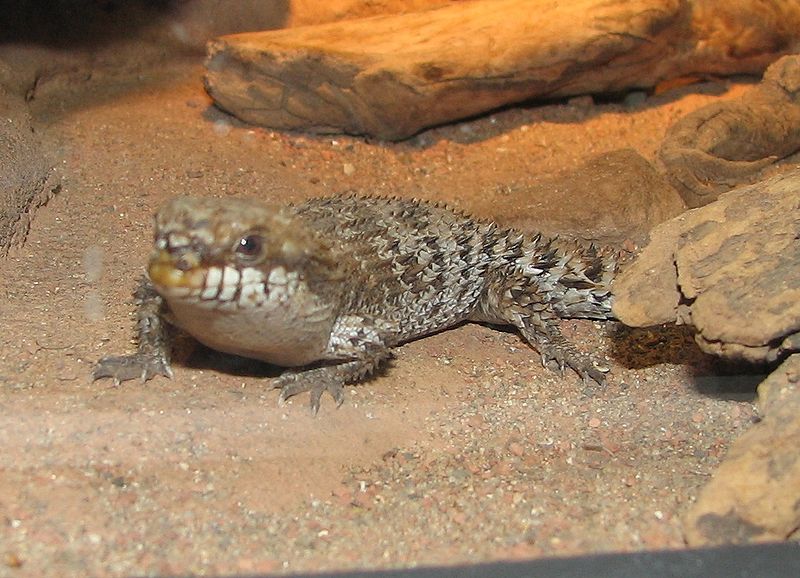 New reptiles and amphibians turn up regularly, but, being generally small and inconspicuous, most excite only hard-core herp enthusiasts. In recent days, however, a string of good-sized, colorful and totally unexpected discoveries have drawn attention from even “regular” people. The new species include a spiny, brick-red skink, a sea snake with uniquely-raised scales, and a new family of hard-headed caecilians, those oddest of amphibians.
New reptiles and amphibians turn up regularly, but, being generally small and inconspicuous, most excite only hard-core herp enthusiasts. In recent days, however, a string of good-sized, colorful and totally unexpected discoveries have drawn attention from even “regular” people. The new species include a spiny, brick-red skink, a sea snake with uniquely-raised scales, and a new family of hard-headed caecilians, those oddest of amphibians.
Western Pilbara Spiny-Tailed Skink (Ergenia cygnitos)
The beautiful, deep-red color of this spine-covered skink closely matches the rocks of its desert habitat in Western Australia’s Pilbara region. You can see its photo and learn more in the article linked below.
Over the past 12 months, 9 other new species – 7 reptiles and 2 frogs – have been found in the same area. Several related skinks (please see photo) and a “barking” gecko are included among the newly-described creatures. Mining proposals spurred the surveys in Pilbara. Hopefully, the discovery so many previously unknown species will limit commercial activities until further studies have been completed. Read More »
 That Reptile Blog – Reptile, Amphibian and Exotic Pet Care and Information
That Reptile Blog – Reptile, Amphibian and Exotic Pet Care and Information


